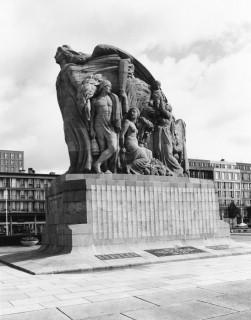Celebrating a new king
 In one of Walter's letters, he recounts what he remembers about the death of Queen Victoria and the coronation celebrations for King Edward VII. His account gives some insight into life at the children's home and the way the children were included in celebrating a national event:
In one of Walter's letters, he recounts what he remembers about the death of Queen Victoria and the coronation celebrations for King Edward VII. His account gives some insight into life at the children's home and the way the children were included in celebrating a national event:King Edward became King of England, and the event was celebrated by all the school children. My brother Bert and I were in the foster home where there were 20 other boys. The foster father’s name was Mr. Leeming, and together with his wife, they performed their duties very efficiently. They were very religious. Bert was now 13 years of age and I was 12 years of age. My father was in the infirmary close to our home, so we were able to go and see him fortnightly, on Sunday afternoons instead of going to Sunday school. Our foster parents were very strict, but not cruel in any way. Each morning, we would rise at 630 am, and prepared ourselves for the many little tasks that had to be done. We then assembled for breakfast, but before “Prayers” were said, Mr. Leeming told us the sad news of the passing of our Queen Victoria. (This was in 1901.)
Events happened quickly, which comes to the coronation of King Edward in 1902. We all wore our best suits to go to school. We had quite a distance to walk to our school, Owler Lane School in Pitsmoor. There were no trams or buses (nor any pennies to pay for our fares). Everyone had little flags, and there were large pictures hung up in our classrooms of our King. We all assembled to march to Firth Park where there was a huge sea of children’s faces in their respective places marshaled by the teachers. Bert and I were quite thrilled with all this ceremony. Our foster father told us we would have a late dinner when we came home from the ceremony. There were several bands around this vast park and the patriotic music was assisted by the singing of all those young throats. The conductor or the “compere” was assisted by large megaphones, so as to make everyone hear his commands.
It was a sunny day, and we all sat down on the grass. Everyone was very orderly. The band then began to play the chief tunes and the singing was most impressive to listen to. After the ceremony, refreshments were handed to each child and some sweets and a bottle of lemonade. This was something out of the blue for me, and lastly, before we dispersed, we were all given a Coronation medal with a red, white, and blue ribbon. I kept mine for such a long time, but like all our childish things they gradually disappear. We were not too sentimental over these things as some children would have been.


























